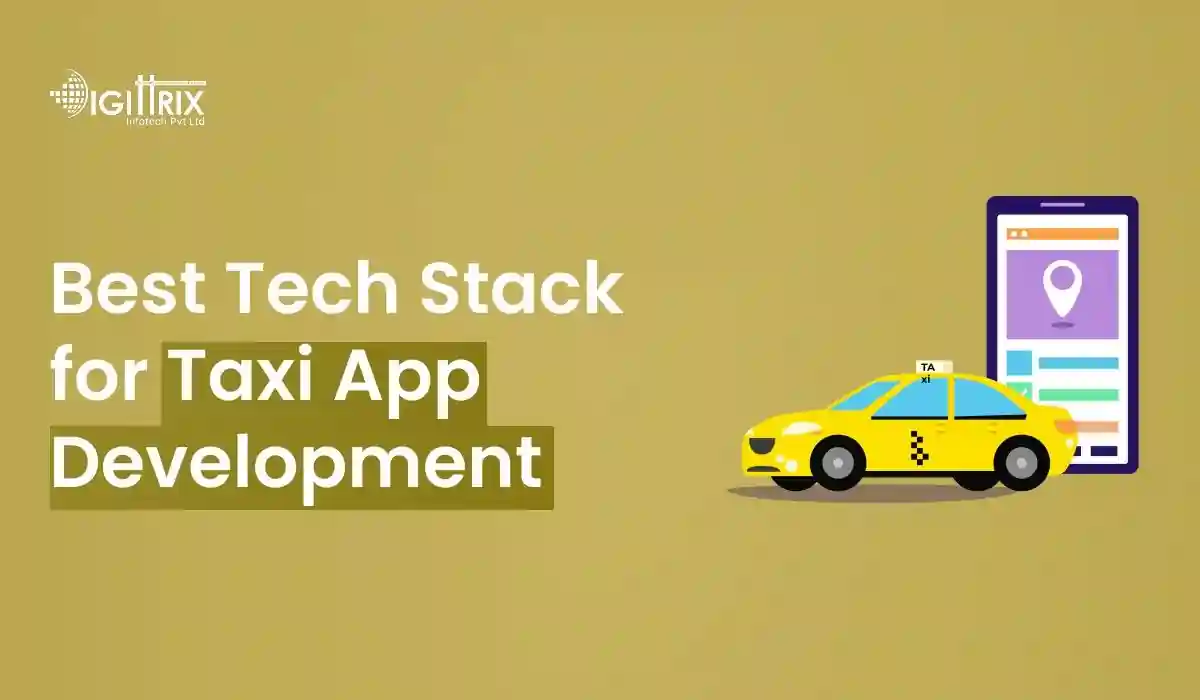Build scalable, user-friendly taxi apps with the right tech stack for smooth ride booking, real-time tracking, payments and driver-passenger interaction.
Highlights
An enthusiastic developer and skilled business management expert with over a decade of experience in the field

The growing demand for ride-hailing services has brought attention to Taxi App Development. Building a competitive and scalable app in this industry requires thoughtful planning especially when choosing the right technologies. Whether you aim to create a traditional ride-hailing platform, an On-demand Taxi booking app, or expand into carpooling app development, the foundation begins with selecting a suitable tech stack.
This article outlines the essential components of a reliable taxi app, including back-end, front-end, database, APIs and mobile frameworks. It also discusses developer choices, third-party tools and architecture planning giving you a complete picture of what a successful Taxi booking app development project needs.
Want to launch a taxi service? Learn how a mobile app can power your taxi booking business from day one.
Before deciding on technologies, it’s important to understand the app's structure. A complete taxi solution typically includes:
Each component demands specific tools for speed, security and maintainability. A Taxi booking app development company must align technology with the business logic and user expectations of these modules. Fortune Business Insights report shows the global ride-hailing market to reach $226.57B by 2028.
Front-end development for taxi apps focuses on responsiveness, speed and mobile compatibility. The choice depends on whether you’re targeting Android, iOS, or both.
For native development:
Android App tools: Java or Kotlin with Android Studio
Native development gives better performance and access to device-level features such as GPS, camera and push notifications—essential for a Taxi App Development project.
If time and budget are limited, a cross-platform approach might be preferred:
These tools offer a common codebase and quicker updates, especially useful in carpooling app development projects, where iteration is frequent.
The back end is responsible for managing all logical operations—user authentication, ride matching, location tracking, fare calculation and more.
Among these, Node.js has become popular for Taxi booking app development due to its asynchronous event-driven nature perfect for real-time apps. Statista reports over 1.45 billion smartphone users access transport apps monthly worldwide.
When choosing a stack for Taxi App Development, the back-end must be responsive and stable, capable of handling spikes in user traffic during peak hours.
Accurate tracking is a key feature in any On-demand Taxi booking app. For this, the following services are commonly used:
Integration of real-time navigation allows passengers to follow driver movements and helps drivers reach locations quickly. A Taxi booking app development company will usually recommend Google Maps due to its widespread adoption and ease of use.
Taxi apps process and store huge amounts of data—user profiles, ride history, payment details and more. Hence, choosing the right database is crucial.
Relational databases offer consistency and are well-suited for managing fare structures, ratings and booking logs. NoSQL databases are preferred in apps that need speed and flexibility like carpooling app development platforms. Business of Apps says 76% of users want live driver tracking and in-app payments.
Instant updates improve communication and user satisfaction. For sending alerts such as driver arrival, booking confirmation, or ride cancellation, developers use:
For chat features between drivers and passengers:
Push and messaging systems must be light on device resources but highly responsive to maintain quality service in an On-demand Taxi booking app.
Payments need to be secure, simple and fast. Integration options include:
A Taxi booking app development company typically recommends integrating at least two gateways to reduce transaction failure rates and serve wider user preferences.
Authentication is essential for user safety. Login via mobile number, email, or social media platforms is standard. Developers use:
Safety also involves background checks for drivers, two-step verification and emergency buttons. These features add trust to any Taxi App Development platform.
Cloud computing supports app hosting, data backups and scalability. Choices include:
A strong cloud infrastructure helps an android app developer or iOS app developer focus more on features and less on server maintenance.
Tracking user behavior, app usage and system performance is important to maintain and grow the app.
Analytics tools guide future updates and marketing efforts in mobile app development for taxis.
Before launching the taxi app, testing ensures that every component works as expected.
Manual testing covers edge cases, while automated tools speed up regression checks. A Taxi booking app development company often runs both parallelly to catch maximum bugs early.
Selecting the right technology for Taxi App Development involves more than just listing programming languages. It’s about understanding the specific needs of your users, riders, drivers and administrators and matching those to appropriate tools.
With proper planning and skilled developers, whether Android app developer or iOS app developer, you can build an app that’s fast, scalable and dependable. A professional Taxi booking app development company can help you navigate the process, from choosing the tech stack to launching your product in the market.
As the industry expands, new features such as ride pooling, electric vehicle integration and voice bookings are reshaping the ride-hailing space. Keeping your app’s architecture flexible will make it easier to adapt in the future.
Taxi booking apps are no longer just about getting from point A to B. They are full-service platforms built on strong mobile app development practices and a carefully chosen tech stack that supports speed, security and long-term sustainability.
Starting a taxi booking business today requires more than just a great idea—it demands the right technology from day one. With more people turning to mobile apps for fast, affordable and simple travel options, your app’s performance and stability depend on the tech stack behind it.
At Digittrix, we specialize in building powerful taxi booking apps that are built on proven technologies. With over 14 years of experience in taxi app development, we understand the importance of choosing the right tools—whether you're launching an On-demand Taxi booking app, building for Android or iOS, or planning for future scalability.
Whether you need help with taxi booking app development, carpooling app development, or building both Android and iOS solutions, our team is equipped to support your goals. Each app we build is tested to handle high user volumes, ensure smooth operations and support long-term growth.
Ready to get started? Speak to our experts today about building your taxi app with a smart, efficient tech stack. Call us at +91 8727000867 or email digittrix@gmail.com to begin your journey with a team you can trust.

Do you need help in Mobile App development?




Join over 1500+ businesses we've already helped!
The ideal tech stack includes Node.js or Python for the back end, React Native or Flutter for the front end, PostgreSQL for data storage and Google Maps for location tracking.
Native apps (Kotlin for Android, Swift for iOS) offer better performance, while cross-platform tools like Flutter or React Native allow faster development using one codebase.
Essential features include GPS tracking, ride history, driver details, payment integration, push notifications and an admin panel for monitoring operations.
PostgreSQL is reliable for structured data, while MongoDB is suitable for flexibility. Redis is often used for caching and real-time data handling.

©2025Digittrix Infotech Private Limited , All rights reserved.